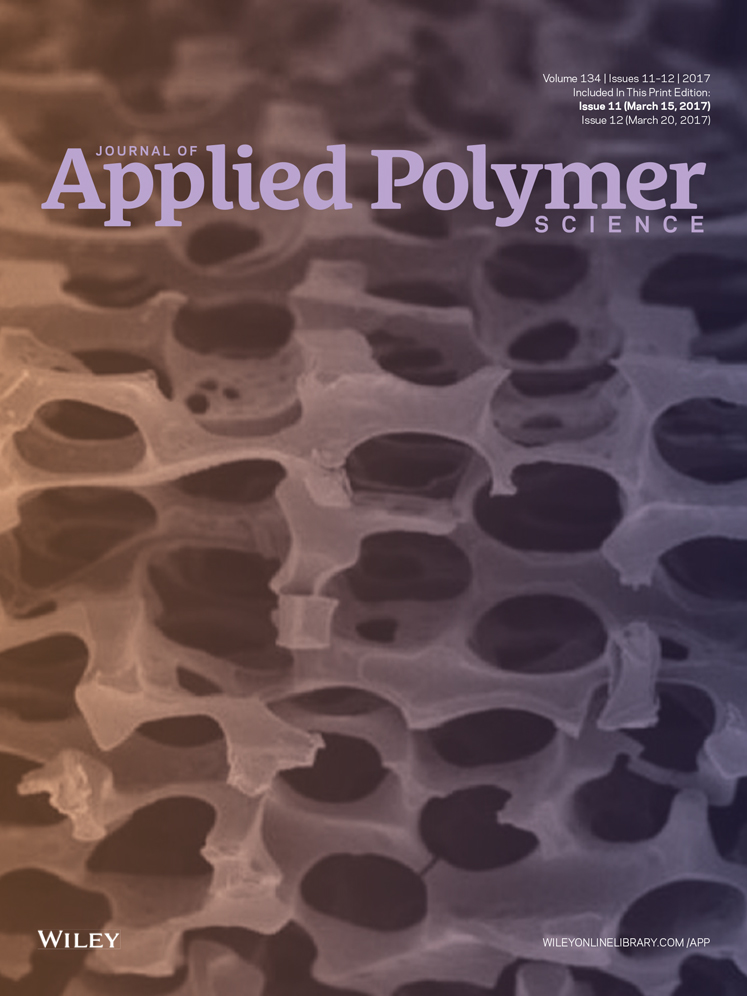Fabrication of fluorescent poly(l-lactide-co-caprolactone) fibers with quantum-dot incorporation from emulsion electrospinning for chloramphenicol detection
ABSTRACT
The on-site rapid detection of antibiotic residues deposited in food or beverage still remains a challenge in daily life. In this study, cadmium tellurium (CdTe) quantum dots (QDs) were incorporated into poly(l-lactide-co-caprolactone) (PLLACL) fibers with emulsion electrospinning. Water-soluble CdTe QDs were used as fluorescence agents, and PLLACL was used as filament materials, respectively. A variety of experiments were performed to characterize the structure and properties of the fibrous composite. Ultraviolet–visible and photoluminescence spectra of the fibers showed similar characteristic absorption and emission properties to those of the CdTe QDs. The fibrous QD–PLLACL composite showed stable fluorescence over 30 days at room temperature and could be used to detect chloramphenicol through fluorescence quenching caused by resonance energy transfer. This approach provides a facile shortcut for fabricating fluorescent fibers that simultaneously inherit the mechanical behavior of PLLACL fibers and the fluorescence properties of CdTe QDs for the detection of antibiotics. © 2016 Wiley Periodicals, Inc. J. Appl. Polym. Sci. 2017, 134, 44584.




